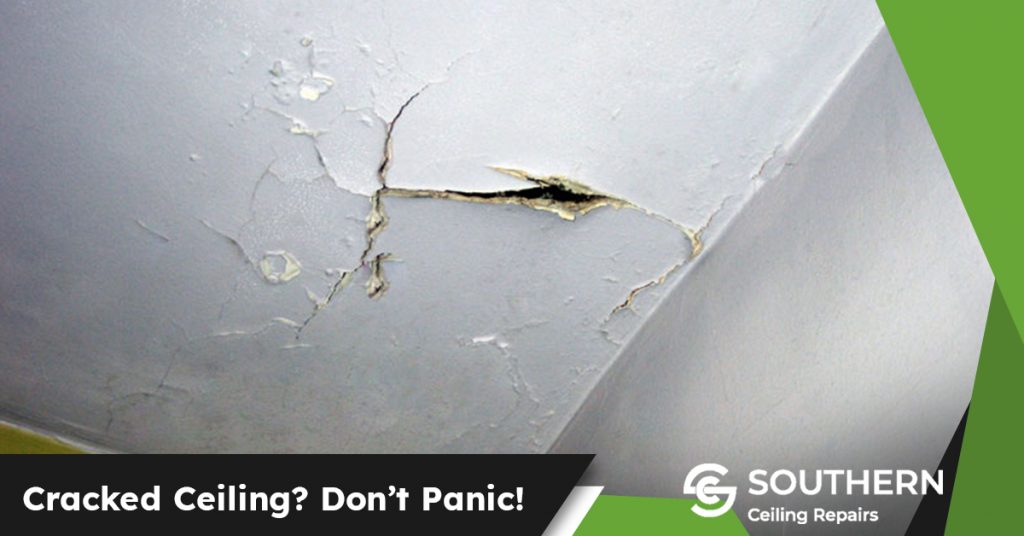
Ceiling cracks are a common issue for homeowners in Australia. While some are simply a sign of ageing homes, others can indicate more serious problems that need attention.
Knowing when to worry about these cracks can save you time, money, and stress. Here’s a guide to help you understand ceiling cracks and how to deal with them.

Cracks in Ceiling: When to Worry?
Not all ceiling cracks are dangerous, but there are certain red flags to watch for:
- Cracks wider than 3mm
These may signal structural problems and should be checked out by a professional. - Diagonal cracks or cracks near walls
These could indicate stress or movement in your home’s structure. - Sagging or rapid cracking
If the crack appears suddenly or the ceiling starts to sag, it’s likely a sign of water damage or a more serious issue. - Accompanying signs
Sticking doors, sloping floors, or multiple cracks appearing at once can point to bigger problems, like foundation subsidence.
What to Do About Cracks in Ceiling?
1. Keep a Record
Measure the width of the crack and take clear photos. This will help you track any changes over time or share details with a professional.
2. Get a Professional Opinion
If the crack looks concerning or you’re unsure, it’s best to consult a building inspector or structural engineer. They can tell you if it’s cosmetic or something more serious.
3. Fix the Problem
For minor cracks, you can use a filler or plaster to patch them up. However, if the cracks are caused by water leaks or structural issues, you’ll need to address the root cause first.
For example:
- Moisture Damage: Fix leaks in your roof or plumbing.
- Foundation Issues: Engage a professional to stabilise your home’s foundation.
What Causes Cracks in Ceiling
1. Natural Settling
As houses get older, they naturally settle into their foundations. This process can cause small, hairline cracks to appear in the ceiling.
Usually, these are not a big deal unless you also notice things like uneven floors or windows and doors that stick.
2. Moisture Damage
Water leaks from your roof or plumbing can weaken your ceiling materials, causing cracks. If the crack is accompanied by sagging or discolouration, it’s likely a sign of moisture damage.
Ignoring these can lead to more serious problems like mould or structural weakening.
3. Foundation Problems
Large cracks, especially those wider than 3mm, can point to issues with your home’s foundation. Cracks caused by foundation problems often appear alongside sloping floors or difficulty closing doors and windows.
4. Poor Workmanship
If your ceiling materials aren’t installed properly, cracks may develop over time. This is more common in newer homes or after renovations where corners might have been cut.
How to Prevent Ceiling Cracks
While you can’t stop all cracks from forming, regular maintenance can minimise the risks:
- Inspect your roof and gutters for leaks, especially after heavy rain.
- Fix any plumbing issues promptly.
- Hire qualified tradespeople for renovations to ensure proper installation of materials.
- Keep an eye on your home’s structure, especially if it’s older or built on reactive soil.
When in Doubt, Act Quickly
Ceiling cracks may seem small, but ignoring them could lead to bigger problems down the track. If you’re unsure about a crack’s severity, don’t hesitate to get professional advice.
Ceiling collapse in WA Great Southern can be a serious issue, but local experts like Southern Ceiling Repairs are here to help. Whether it’s a simple fix or addressing significant damage, they’ll assess your ceiling and provide reliable solutions to restore your home.
Fixing ceiling cracks in Perth Southern Suburbs promptly can help prevent more significant issues down the track. While most cracks are harmless, wide or fast-growing ones should be checked out to address the root cause and avoid further damage.
Protect your home’s value and safety by staying proactive—when it comes to ceiling cracks, it’s better to be safe than sorry. If you need professional help, contact us for ceiling repairs in Great Southern Region WA to ensure the job is done right.
